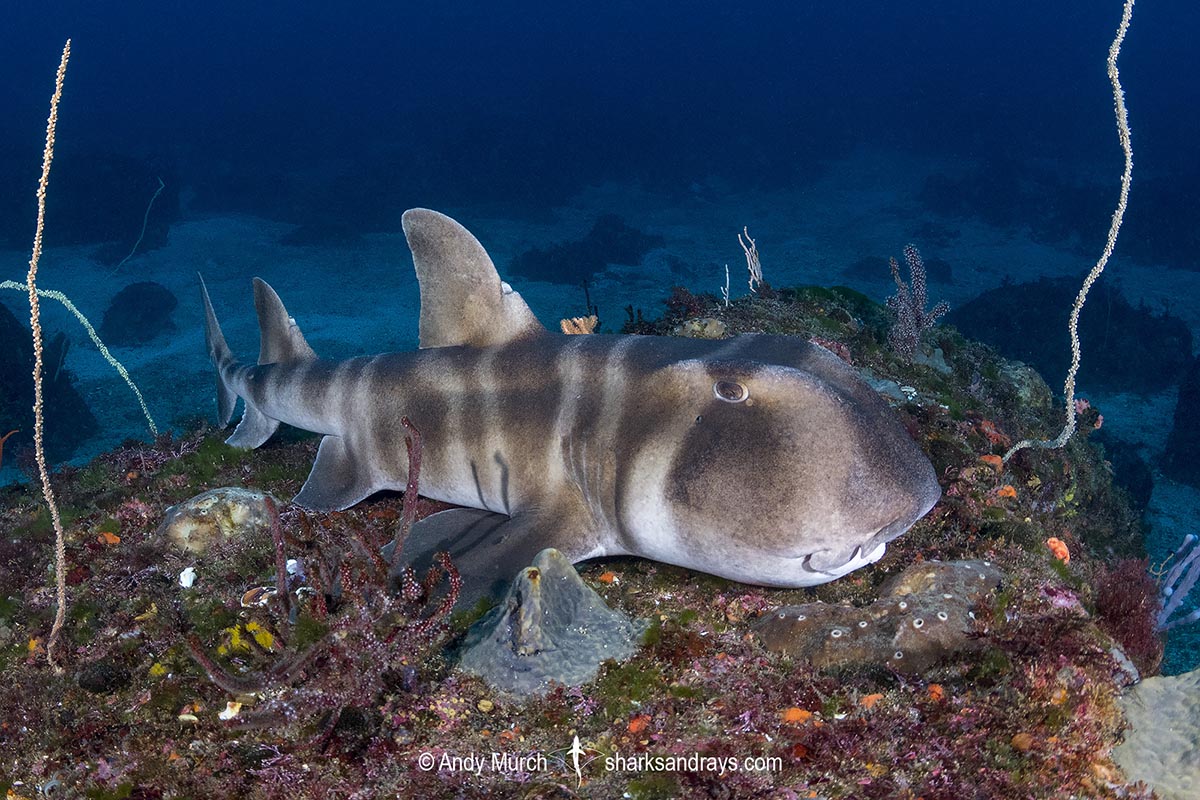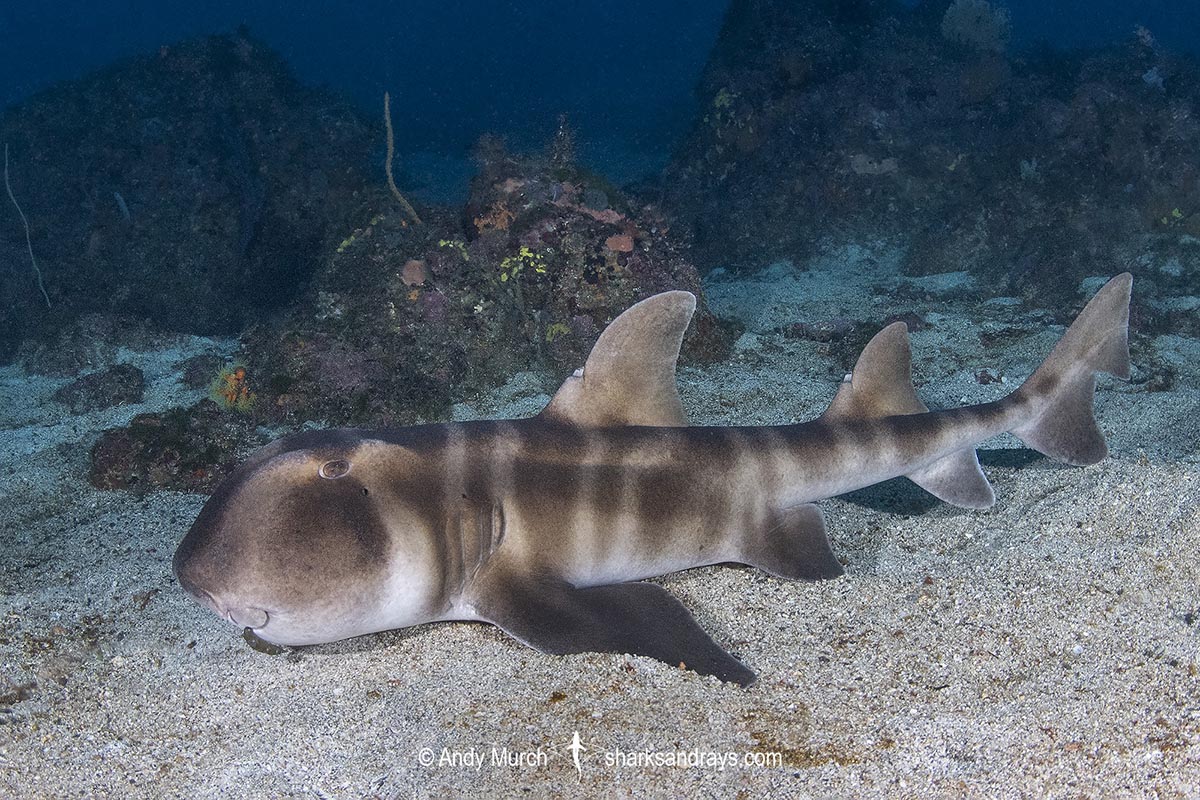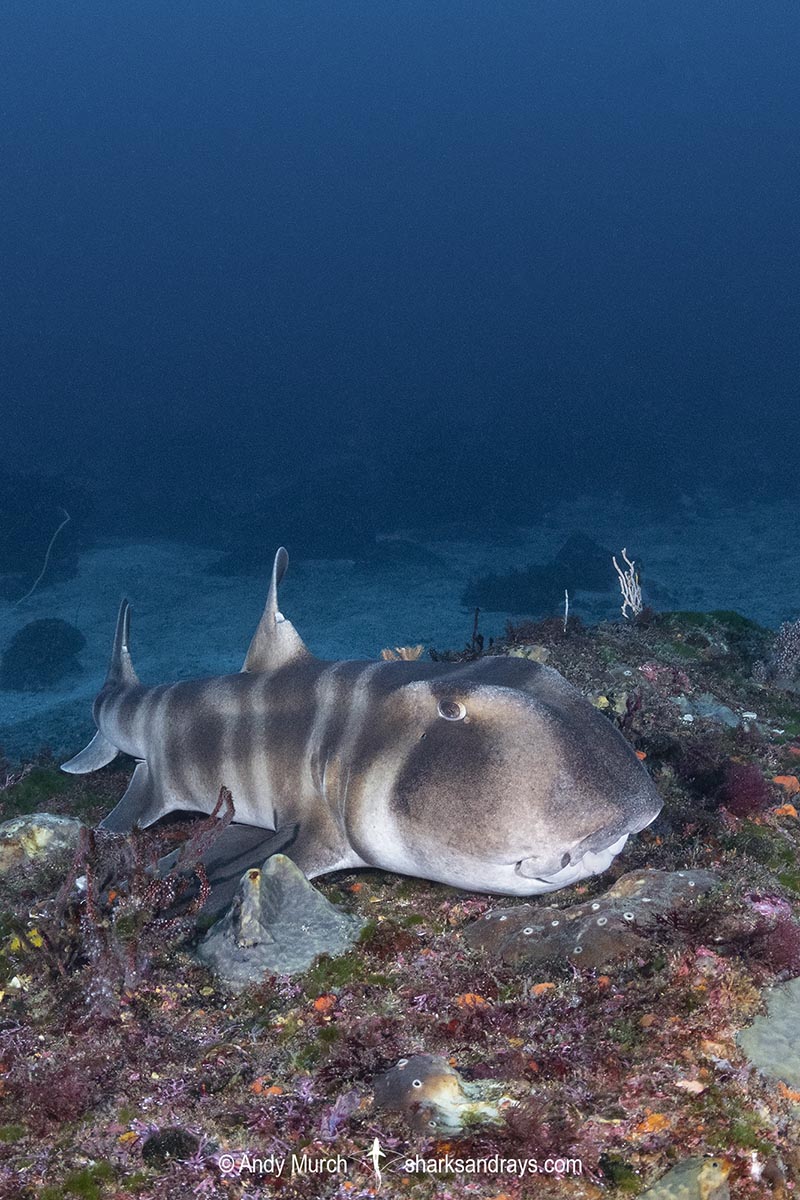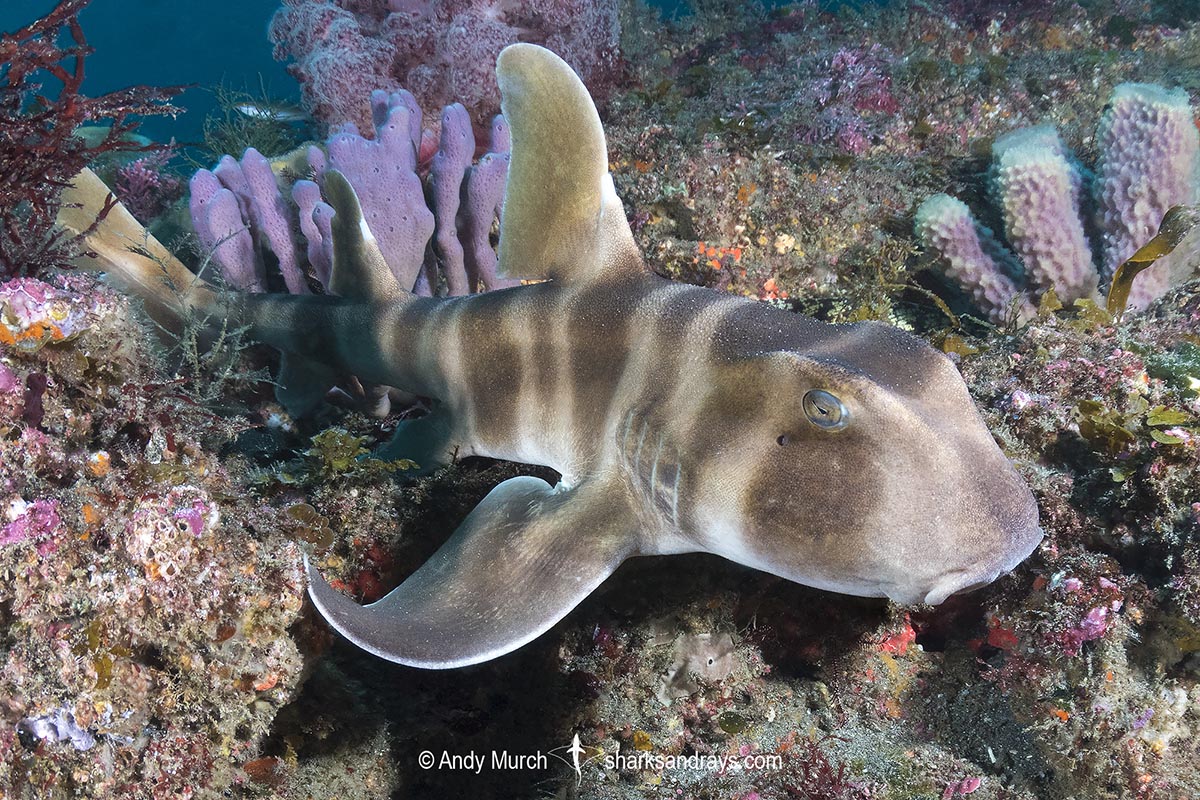Common name(s)
Japanese Bullhead Shark, Japanese Horn Shark.
Binomial
Heterodontus japonicus.
Synonyms
Cestracion japonicus, Cestracion philippi japonicus.
Identification
Stout body. Large square head with prominent ridges above eyes. Two very high dorsal fins, each with a prominent spine at its origin. First dorsal fin very high with a pointed or acutely rounded apex. First dorsal origin slightly anterior to pectoral fin insertion. Second dorsal fin origin level with pelvic fin insertion. Pectoral fins much larger than first dorsal. Pelvic fins about the same size as second dorsal fin. Relatively small anal fin. Large, triangular caudal fin with deep subterminal notch.
Dorsal coloration tan or dark brown, with a subtle, thin, pale, vertical bars or saddles. Fins may be dusky in areas but mostly unmarked.
Size
Maximum length 120cm. Size at birth approx. 18cm.

Conservation Status
LEAST CONCERN
The Japanese bullhead shark is caught as bycatch in gillnet fisheries throughout its range, but its preference for rocky terrain, low commercial value, and high post release survivorship all contribute to its continued abundance.

Habitat
warm-temperate and sub-tropical seas. Prefers rocky coral reefs and areas of kelp from 6-37m.
Distribution
Northwestern Pacific. The Japanese horn shark is found around Japan, Korea, northern China, and Taiwan.
Reproduction
Oviparous. Females lay pairs of eggs among rocks or kelp at depths of 8-9 m between March and September; mainly March to April in Japan. In one year, 6-12 spawnings may occur.
Diet
Feeds on molluscs, small fishes and sea urchins.
Behavior
Hunts nocturnally. Female Japanese bullhead sharks are known to nest in small groups.
Reaction to divers
Easy to approach, remaining completely motionless unless molested, at which point Japanese bullhead sharks usually retreat deeper under cover or slowly swim away to a quieter resting spot.
Diving logistics
In Japan, this species is regularly spotted off the south Coast of Honshu Island. I have seen numerous Japanese bullhead sharks at dive sites in Chiba and on the Izu Peninsula. Likely, it is relatively easy to find all around Honshu where diving is organized.
Big Fish Expeditions runs Japanese Shark Diving Expeditions for English speaking divers to various dive sites around Honshu each year. So far, bullhead sharks have always been encountered. Other species seen include hundreds of banded houndsharks, Japanese wobbegongs, Japanese angelsharks, and numerous other sharks and rays.
Although the Japanese bullhead shark is also recorded from China and Korea, visibility along the Pacific coast of mainland Asia is notoriously bad so these areas are rarely dived.














